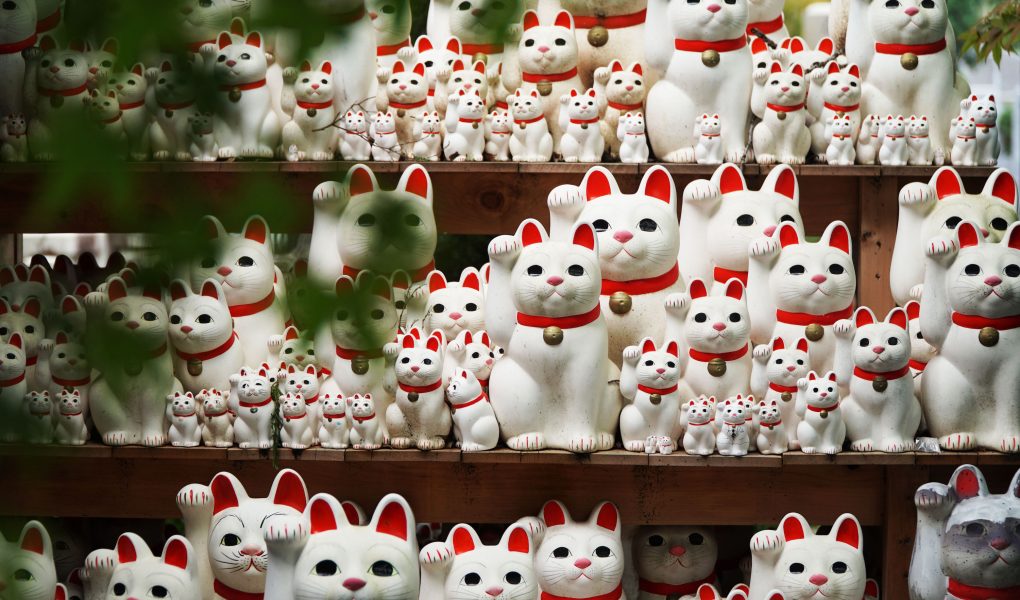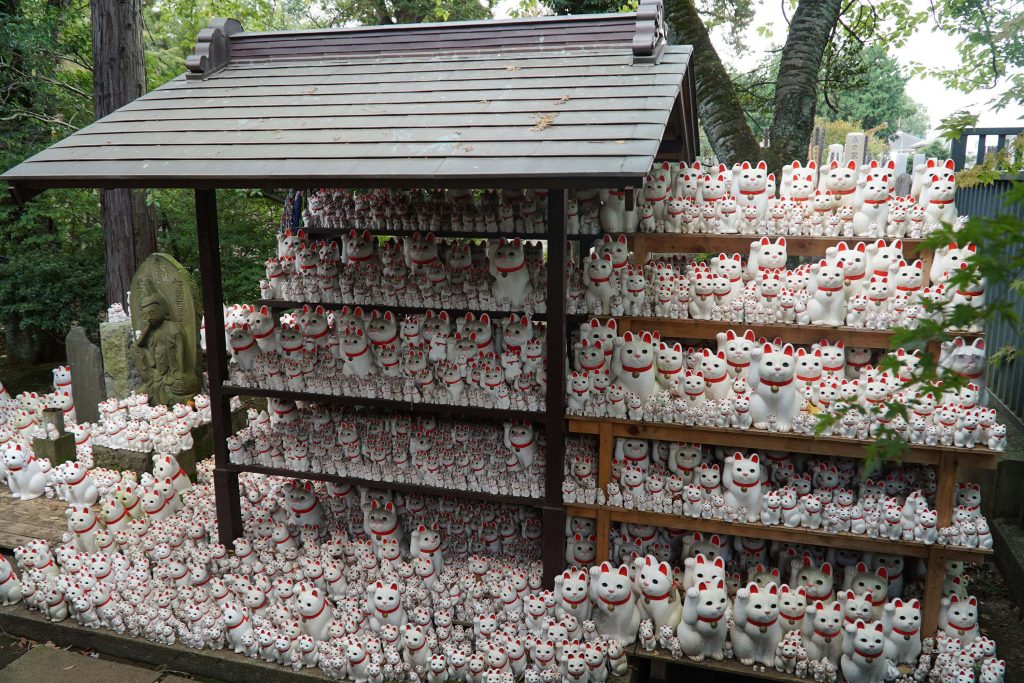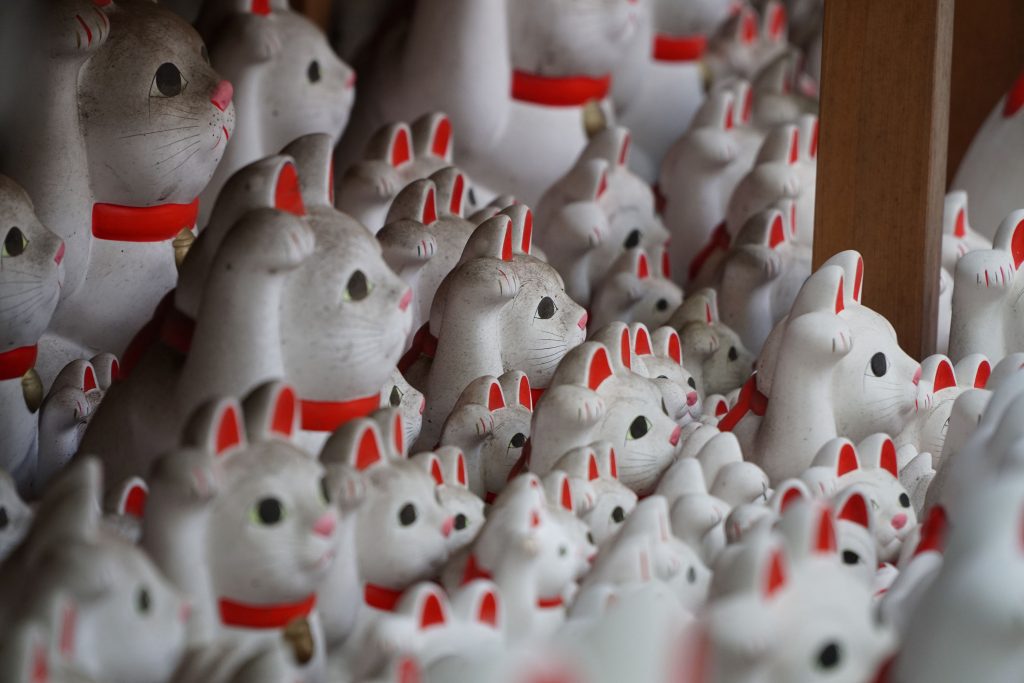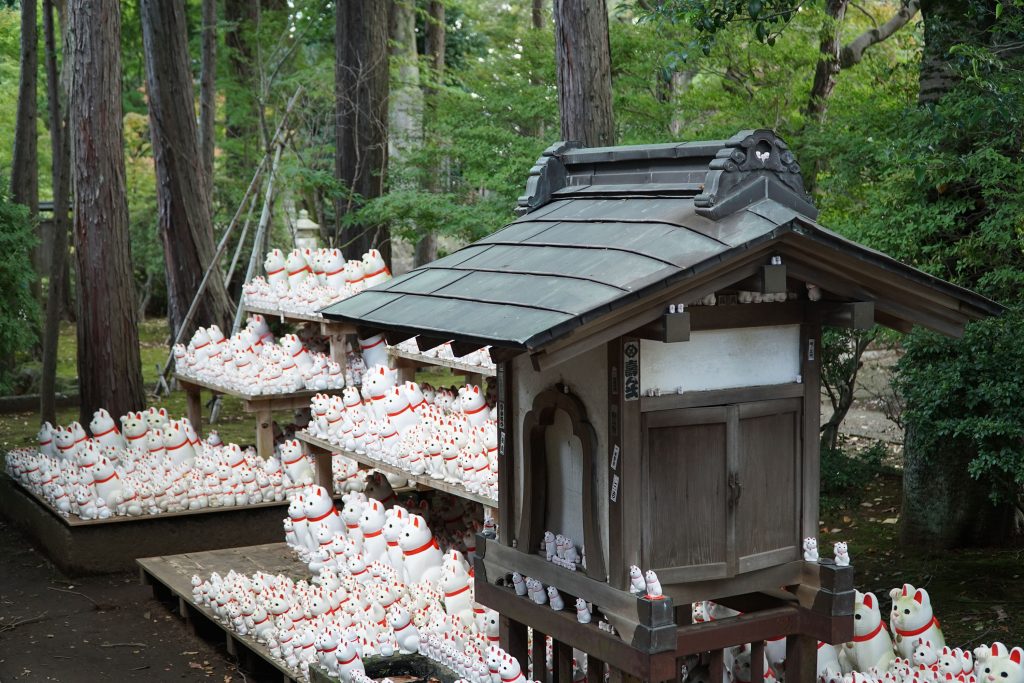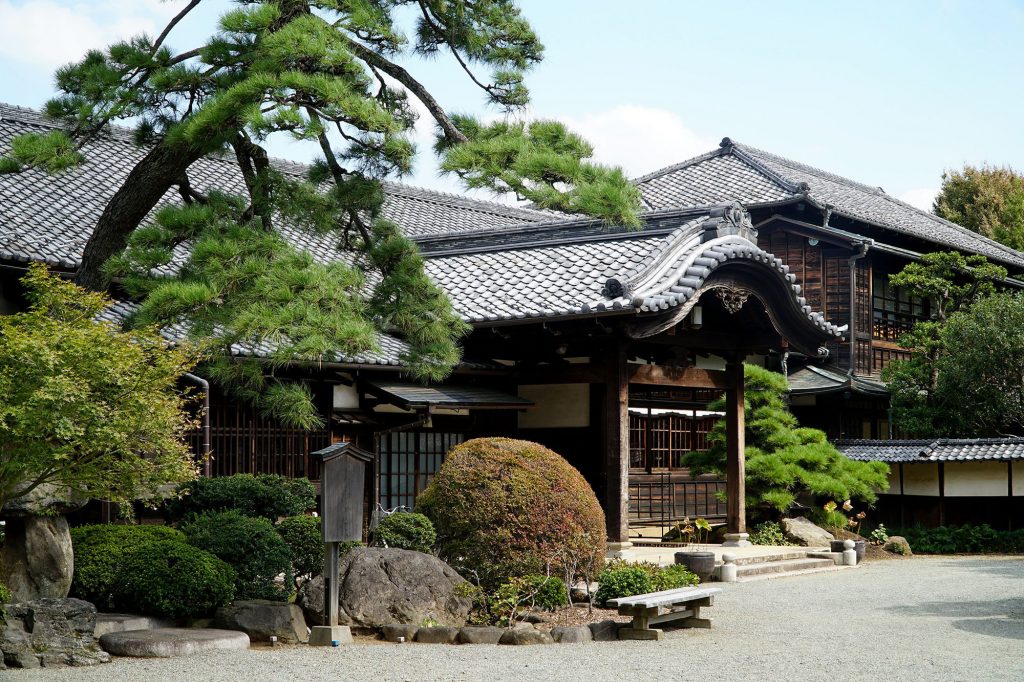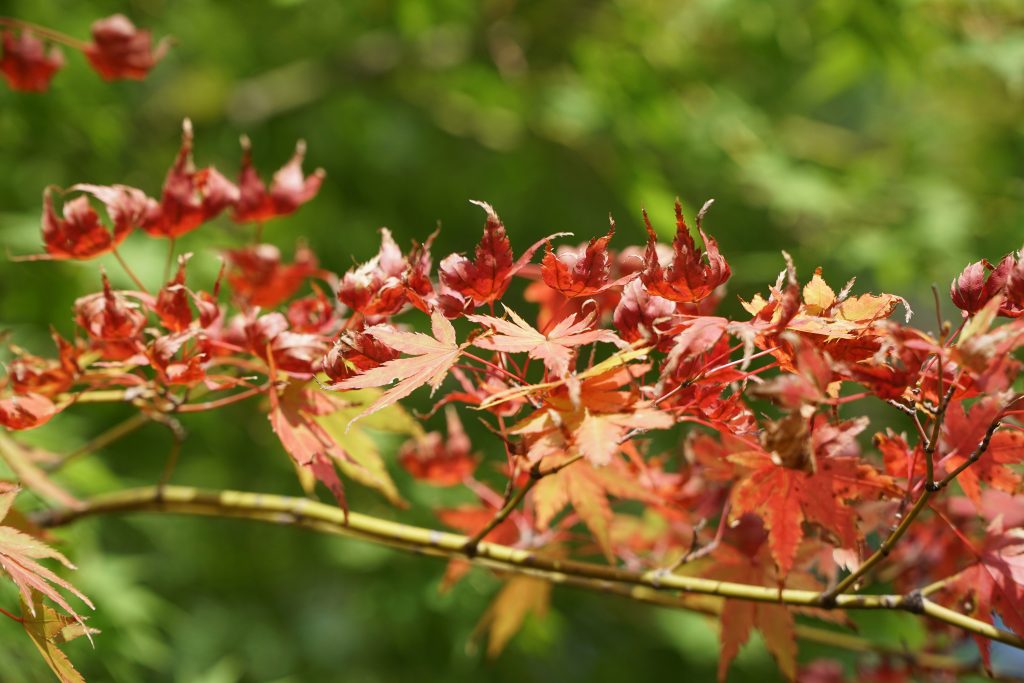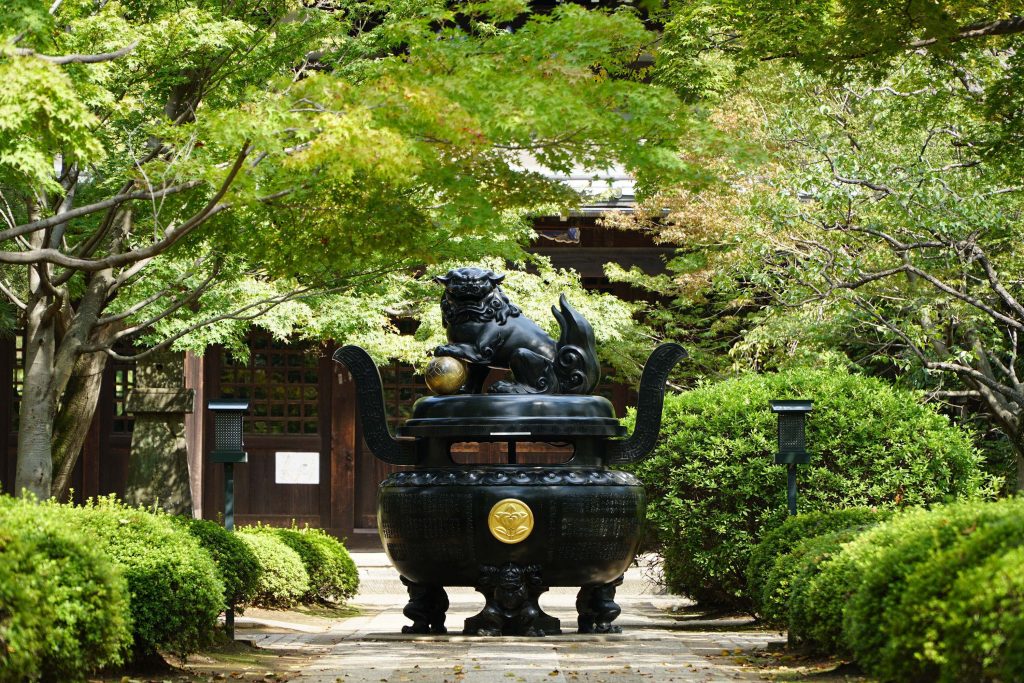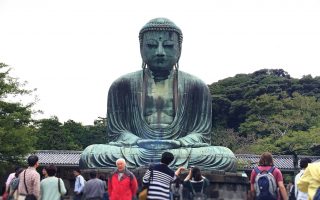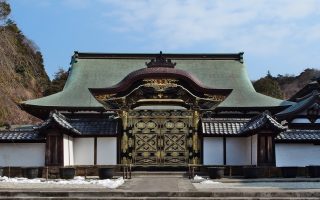In the Setagaya district of Tokyo, in a quiet residential area, there is a real hidden gem of a temple. The Gotoku-ji buddhist temple is not amongst Tokyo’s biggest tourist magnets – probably because it’s located a bit away from everything else. However it has something really unique to offer: thousands of Maneki-neko figures (beckoning cat figures).
The beckoning cat is a well known symbol, which is seen all over Asia. It’s typically a small figure of a cat, with one paw raised. It is often seen at the entrance of a shop or restaurant, as it is said to bring in customers and money. Incorrectly the figure is often referred to as a “Chinese lucky cat” while in fact it originates from Japan.
The Legend of Gotoku-ji and the Beckoning cat
The legend has it that Gotoku-ji is the place where the beckoning cat originated. The story goes, that feudal lord Ii Naotaka (1590-1659) was saved from a thunder storm, when he passed Gotoku-ji, and a cat beckoned him in with a waving paw. The lord was very thankful for the cat having beckoned him in, and later made the temple his family temple.
Over time, people started offering cat shaped figures at the temple, and things seem to have gotten a little out of hand since then. Today thousands of Maneki-neko figures are placed around the temple – especially around a small kannon statue on the side of one of the buildings.
Today visitors can purchase Maneki-neko figures of various sizes in the temple shop, and even the ema plates have cat motives. (Ema plates are small wooden plaques on which one writes a prayer or wish). Actually the cat-mania has spread to most of the neighborhood. Figures can be seen around the areas shopping streets and at the train station.
More about the Maneki-neko
The legend about Gotoku-ji is great, but other lengds about the origin or the Maneki-neko do exist. Whether or not this one is true will probably never be known.
There is however more to the symbolism of the beckoning cat. The Maneki-neko, with it’s raised paw, looks somewhat similar to a cat washing it’s face. There is an old Japanese belief, that a cat washing its face is a sign that visitors will soon come. Similarly in China, it’s said that a cat washing its face means rain is coming. Placing a figure of a cat washing it’s face near a shop should then help attract customers.
It is commonly believed that the Maneki-neko originates from the Edo-period, however the first mention of the characteristic cat figure is in a chronology of Edo, drawn in 1852.
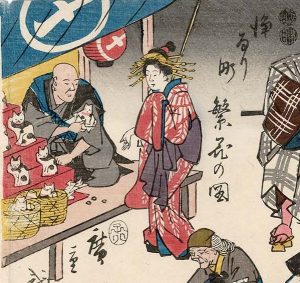
Getting there
By train: the nearest larger station is Gotokuji Station. From Shinjuku take the Odakyu line 15 mintues (9 stops). Then walk for 10 minutes to the temple. The train is not covered by the Japan Rail Pass.
By light rail: Take take the Tokyu-Setagaya Line to Miyanosaka which is slightly closer to the temple than Gotokuji Station.

